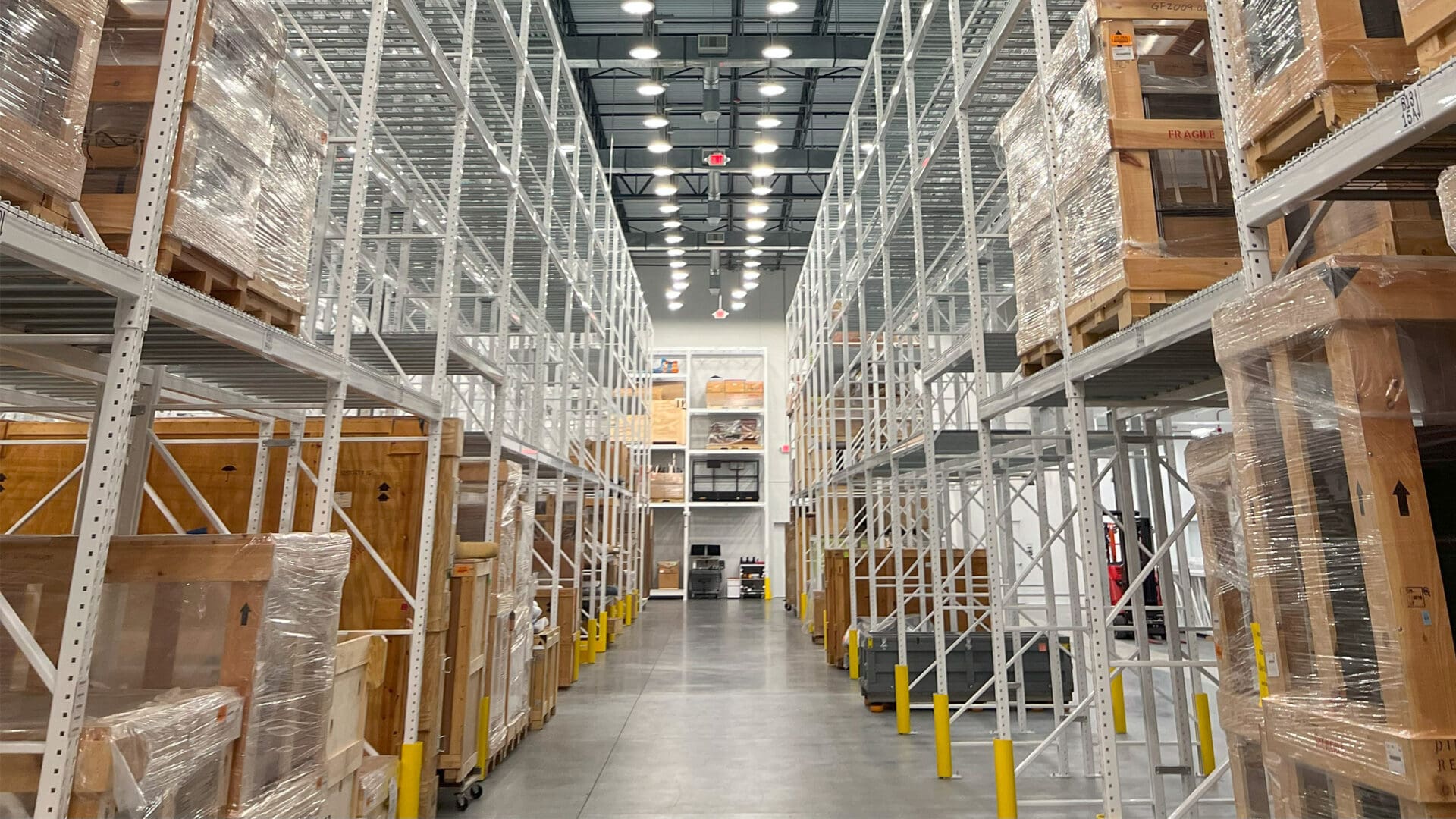As the museum industry expands with new institutions and exhibitions, the need for specialized art storage grows. These facilities must ensure reliable emergency power, advanced security, energy-efficient lighting, and precise temperature and humidity control.
Since many of these requirements are rooted in mechanical, electrical, and plumbing (MEP) systems, GHT focuses on four key considerations when designing cutting-edge art storage environments.
Emergency Power
Emergency power is essential for maintaining environmental controls and security systems that safeguard valuable art collections during power outages.
In a recent project for a confidential client in Lanham, MD, GHT designed a solution that included a compact, permanent emergency generator dedicated to critical security systems and information technology systems.
To ensure continued HVAC operation during prolonged outages, the team also included a 1,200-amp outdoor docking station, allowing the tenant to connect a flatbed generator in the event of an extensive power outage.
Advanced Security + Planning for the Unknown
With clients ranging from international museums to private collectors, art storage facilities demand robust security measures to protect their valuable collections.
In the event of a power outage, most facilities incorporate an emergency generator to maintain strict access control and to keep all monitoring systems in place. Additionally, issues that might be considered minor in other buildings, such as condensate dripping from a roof drain, can result in significant financial loss in an art storage environment.
To mitigate these risks, clients require meticulous routing of overhead pressurized piping, redundant HVAC systems, auxiliary drain pans, and early smoke detection systems to identify potential fire and smoke conditions.
High-Efficiency Lighting
While the primary purpose of these facilities is to store artwork, there is a growing demand for high-quality lighting to meet client expectations. However, energy codes often restrict the allowable lighting power in these spaces due to their classification as storage areas. After all, your grandmother’s Monet would likely prefer to be in the dark!
Meeting both aesthetic and code requires close coordination among the design team to deliver consistent lighting levels and achieve expected minimum footcandle levels throughout, all while limiting energy consumption to as low as 0.33 Watts per square foot, depending on the energy code in effect.
Temperature + Humidity Set Points
For the Lanham, MD facility, the mechanical system was designed to maintain a temperature of 70°F with 50% relative humidity year-round, which aligns with the targeted indoor air condition of major art storage companies like UOVO and Crozier.
Depending on the physical location of the facility and the construction of the façade, several factors drive the size of air-conditioning systems, humidification, and dehumidification equipment. Factors can include vapor permeation of walls and roofs, thermal breaks within the façade, outdoor air requirements, and the building’s orientation relative to the prevailing winds and its impact on air infiltration.
In a recent project converting a self-storage space into art storage, the building initially struggled to maintain stable temperature and humidity levels. Despite being equipped with high-efficiency insulated wall panels, performance issues persisted. GHT recommended conducting a blower door test, which revealed an effective leakage area exceeding 25 square feet. Once the building envelope was properly sealed, the facility was able to consistently maintain the required environmental set points for temperature and humidity.
